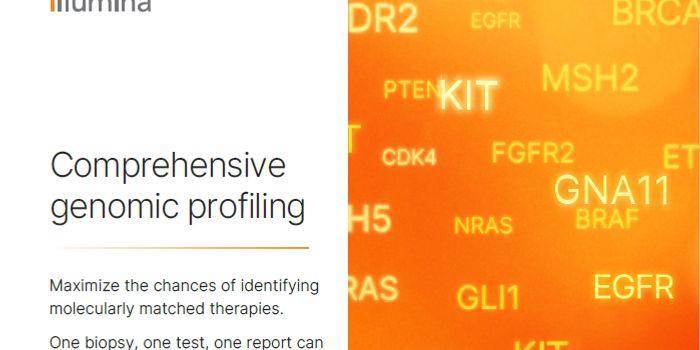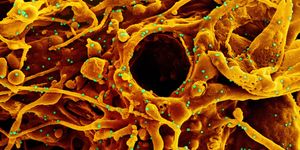'Short Term' Gene-Editing Corrects a Disease-Causing Mutation
There are about three billion bases in the human genome, and each letter is either an adenine (A), thymine (T), cytosine (C), or guanine (G). Sometimes, variations arise in the sequence of the genome, and those changes can have a variety of consequences. Some genetic variants have little impact, while others can cause a serious disease. The most common genetic mutation in the human genome is a cytosine that becomes a thymine, a C to T.
In genetics, researchers have long sought ways to correct the deleterious mutations in the human genome that cause disease. One caveat is that permanently editing the human genome could have many unintended consequences. A tool that would edit genes temporarily may be safer to use in the clinic. Researchers have now demonstrated that it's possible to edit a disease-causing mutation in a short-term way. They used a transient lentivirus to deliver base-editing reagents into the cell, but the lentivirus does not integrate into the genome. The work has been reported in Nature Communications.
"There are risks associated with previous usage of gene editing tools that are integrated into the cell's DNA, and once a mutation has been corrected, the tools in the cell are no longer needed," said co-first study author and Karolinska Institute graduate candidate Daniel Whisenant.
Using a mouse model and skin cells from patients, scientists have applied this method to repair a C to T mutation that occurs in a gene called LMNA. More than 90 percent of individuals with Hutchinson-Gilford progeria syndrome carry this disease-causing mutation.
An adenine base editor (ABE) was used in this study, which corrects the mutation. The mRNA encoding the gene-editing tools was transiently expressed in cells, but it was enough time to repair the defect in differentiated stem cells.
The mutation was corrected in 21 to 24 percent of mouse skin cells by expressing an ABE for a short period of time. Positive signs were observed in the treated areas of the mice after about 4 weeks, by which time the DNA in cells in tissue had been corrected. Those corrected cells also moved into different parts of the skin. This seems to indicate that those cells can divide, have gained function, and are supporting the skin.
Hutchinson-Gilford progeria syndrome (HGPS) is a rare disorder in which individuals age more quickly than others. Children with HGPS may appear much older, and they frequently have age-related diseases; median survival is only about 14 and a half years. It's been studied especially because it has provided insight into how aging occurs. Those with HGPS are still waiting for a cure, and there is only one treatment for the disease that provides limited benefits.
"In this particular study, we have used gene editing to correct the mutation in the skin, but in future studies, we want to test the method in other tissues," said study leader Maria Eriksson, a Professor at Karolinska's BioNut.
"A short-term expression, without detectable toxicity, also opens up the possibility of adding the gene editing tools on several occasions and thus increasing the amount of repaired cells."
Sources: Karolinska Institute, Nature Communications









